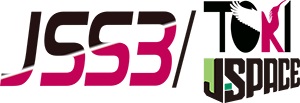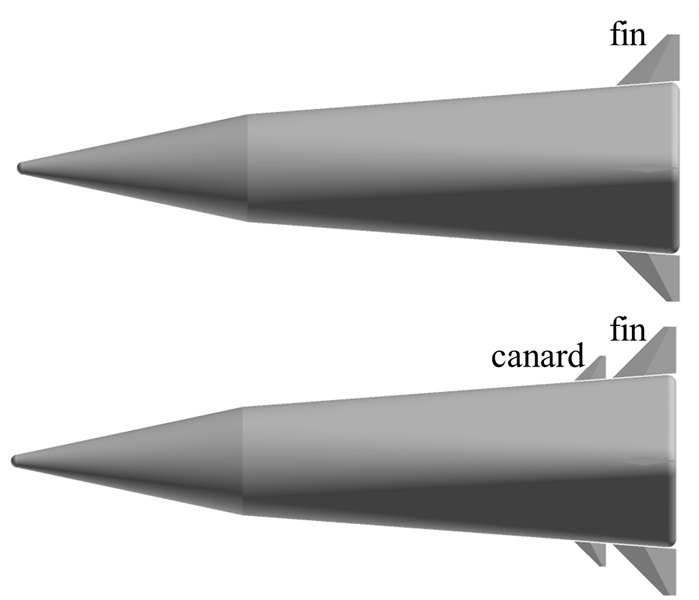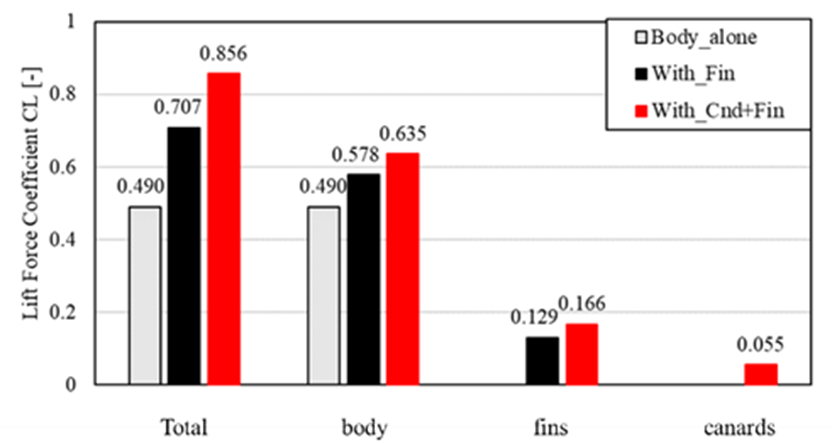Computational Study on Aerodynamic Characteristics of Reusable Slender Body Configurations
JAXA Supercomputer System Annual Report February 2023-January 2024
Report Number: R23EACA12
Subject Category: JSS Inter-University Research
- Responsible Representative: Keiichi Kitamura, Associate Professor, Yokohama National University
- Contact Information: Tomohiro Mamashita(mamashita-tomohiro-nj@ynu.jp)
- Members: Yuka Hara, Hibiki Kumai, Keiichi Kitamura, Tomohiro Mamashita, Kouya Nakahara
Abstract
Reusable launch vehicles are studied to reduce space transportation costs. Reusable rockets perform return flights that conventional expendable rockets do not experience. We worked to clarify the aerodynamic characteristics of a vehicle during the return phase using numerical analyses and wind-tunnel tests. We validated the calculation results and obtained the aerodynamic characteristics through comparing the results of calculations and tests. Moreover, we clarified aerodynamics during the return flight through visualization of the calculation results. In this year, we worked on the proposal of an aerodynamic device (canard) for improvement of the aerodynamic performance, the investigation of the dynamic characteristics during the turnover maneuver, and the investigation of the Reynolds number effect due to the difference between the wind-tunnel-test and actual-flight scales.
Reference URL
N/A
Reasons and benefits of using JAXA Supercomputer System
We used JSS3 because we treated fluid calculations that require an enormous amount of computation time on a normal workstation. The calculations with small eddies at high angles of attack (60-120 degrees) and dynamic calculations can be completed in a realistic amount of time by using JSS3. Visualization of the flow fields of the numerical fluid calculations allows us to investigate not only the aerodynamic characteristics of the reusable rocket, but also its mechanism.
Achievements of the Year
We performed numerical fluid calculations using a slender body simulating a reusable rocket, assuming gliding flight during the return flight. To improve the lift-drag ratio of the reusable rocket model with fins, we proposed a model with canards placed in front of and close to the fins, inspired by a “close-coupled-delta wing” (Fig. 1). The numerical results showed that the new model improved the lift-drag ratio by 20.5% at an angle of attack of 15 degrees compared to the conventional fin-only model. This is because the addition of the canards changed the flow field around and behind the fins, increasing the lift of the body and fins as well as that of the canards themselves (Fig. 2). The reason for the increase in body lift is that vortices were generated near the canards, and the negative pressure of the vortices generated a lift force on the body (Fig. 3). The increase in fin lift is due to the negative pressure of the vortex from the canard, which reduced the pressure on the top surface of the fin (Fig. 4).
Publications
– Oral Presentations
– Tomohiro Mamashita, Ryota Tamai, Tomotaro Muto, Keiichi Kitamura, Satoshi Nonaka, “Numerical Analysis and Wind Tunnel Testing of Experimental Reusable Vehicle RV-X Aerodynamics at 90 degrees Angle-of-Attack,” 34th International Symposium on Space Technology and Science, 2023.
– Poster Presentations
– Yuka Hara, Tomohiro Mamashita, Ryota Tamai, Keiichi Kitamura, Satoshi Nonaka, “Dynamic Simulation of Turning Reusable Rocket Aerodynamics from 0 to 180 degrees Angles-of-Attack,” 67th Space Sciences and Technology Conference (in Japanese), 2023.
Usage of JSS
Computational Information
- Process Parallelization Methods: MPI
- Thread Parallelization Methods: N/A
- Number of Processes: 480 – 3840
- Elapsed Time per Case: 168 Hour(s)
JSS3 Resources Used
Fraction of Usage in Total Resources*1(%): 0.29
Details
Please refer to System Configuration of JSS3 for the system configuration and major specifications of JSS3.
| System Name | CPU Resources Used(Core x Hours) | Fraction of Usage*2(%) |
|---|---|---|
| TOKI-SORA | 6715637.59 | 0.30 |
| TOKI-ST | 145790.23 | 0.16 |
| TOKI-GP | 0.00 | 0.00 |
| TOKI-XM | 0.00 | 0.00 |
| TOKI-LM | 12739.03 | 0.97 |
| TOKI-TST | 0.00 | 0.00 |
| TOKI-TGP | 0.00 | 0.00 |
| TOKI-TLM | 0.00 | 0.00 |
| File System Name | Storage Assigned(GiB) | Fraction of Usage*2(%) |
|---|---|---|
| /home | 1429.17 | 1.19 |
| /data and /data2 | 89308.33 | 0.55 |
| /ssd | 13386.67 | 1.26 |
| Archiver Name | Storage Used(TiB) | Fraction of Usage*2(%) |
|---|---|---|
| J-SPACE | 46.25 | 0.17 |
*1: Fraction of Usage in Total Resources: Weighted average of three resource types (Computing, File System, and Archiver).
*2: Fraction of Usage:Percentage of usage relative to each resource used in one year.
ISV Software Licenses Used
| ISV Software Licenses Used(Hours) | Fraction of Usage*2(%) | |
|---|---|---|
| ISV Software Licenses(Total) | 4648.38 | 2.10 |
*2: Fraction of Usage:Percentage of usage relative to each resource used in one year.
JAXA Supercomputer System Annual Report February 2023-January 2024






